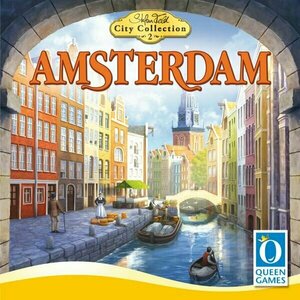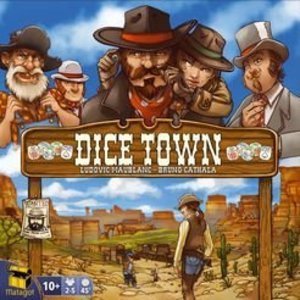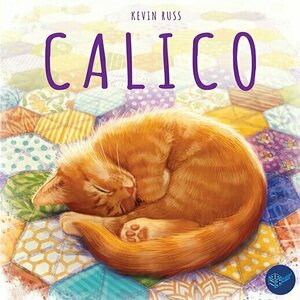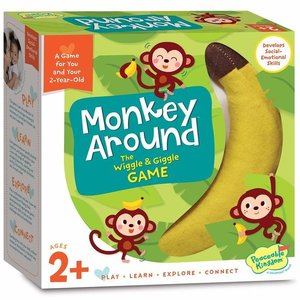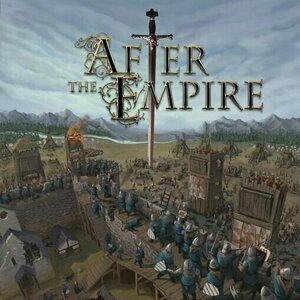
After The Empire
Tabletop Game
After the fall of Rome, Europe fell into the so-called "dark ages." From the chaos, feudalism arose...

ScoreKeeper ScoreBoard
Sports and Games
App
ScoreKeeper ScoreBoard - the Ultimate Scoreboard app! ...
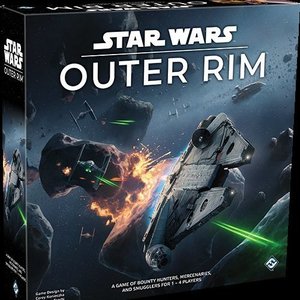
Star Wars: Outer Rim
Tabletop Game
Take to the stars and become a living legend in Star Wars: Outer Rim, a game of bounty hunters,...
2019Games StarWarsGames
Purple Phoenix Games (2266 KP) rated Space Explorers in Tabletop Games
Jan 4, 2021
Space Explorers is a card drafting, set collection game for two to four players. In it players will take on the mantles of unique Human Resources managers… in space! Well, not IN space, but FOR space. By recruiting the best and brightest engineers, testers, scientists, builders, and astronauts players will score points in addition to scoring points for completing projects.
DISCLAIMER: We were provided a copy of this game for the purposes of this review. This is a retail copy of the game, so what you see in these photos is exactly what would be received in your box. I do not intend to cover every single rule included in the rulebook, but will describe the overall game flow and major rule set so that our readers may get a sense of how the game plays. For more in depth rules, you may purchase a copy online or from your FLGS. -T
To setup, assemble Hub parts tableau organizer for each player. Shuffle the deck of Specialist cards (engineer, tester, et al) to be recruited and reveal six face up to symbolize the Center. Deal each player one of these Specialist cards to create their starting hand. Randomly choose two plus the number of players Project tiles and lay them on the table to be completed throughout the game. Each player will also receive a reference sheet (VERY handy) and one token of each Research type. Determine the starting player and the space race may now begin!
On a player’s turn they have two choices to make: take a Specialist card from the table into their hand, or recruit a Specialist from either their hand or from the table and place in their personal tableau. After this is completed the player may collect one Project tile if they now control the correct number of Specialists per Project tile.
To take a card into hand, a player simply selects one face-up Specialist card from those on the table and places it in hand. Simple.
To recruit a Specialist the player will need to spend Resources equal to the recruitment cost printed on the Specialist card. Resources may be spent in any combination from actual Resource tokens, Resources provided by recruited Specialists already in the player Hub (tableau), and discarding a Specialist card from hand to the table to give two Resources of any type.
As Specialists are recruited to the players’ Hubs they will then give a discount toward recruiting future Specialists of the same type along with other abilities. For each Specialist in the Hub the player will receive a discount of one Resource icon needed to spend to recruit a Specialist of the same type. For example, if a player already has recruited two Scientists, the next Scientist they recruit will be discounted by two Resources. These Resources are discounted from the bottom-up on the listed recruitment cost, and may even result in Specialists being recruited for free. Similarly, some Specialists have certain abilities printed on their card that allow such actions as recruiting cards for free, or providing Resource icons to be used to recruit, or even providing extra points at game end for a variety of reasons.
Play continues in this fashion of players taking Specialists in hand or recruiting them to their Hub to be used to complete Projects and earn points. The game ends once the last Project has been completed or any one player has recruited their 12th Specialist. Every player will have the same number of turns, after which the winner will be the player with the most points!
Components. I have a lot to say about the components here. I think that 25th Century Games has absolutely nailed every single component in this box. The Specialist cards are excellent quality: linen finished, great thickness, and they shuffle realllllly well. The Project tiles, Hub parts, and Resource tokens are thick board stock. The reference sheets are good and the rulebook is just perfect. One thing that may be slightly polarizing is the art style. Space Explorers uses imagery similar to what you would find on many things in the 1950s and 1960s in America. That said, I absolutely love the art style and it is reinforced on every component in this game. The icons are slick and stylish, the color scheme is muted without being drab, and everything you play with is meant to help immerse you into the time of the first astronauts. It’s simply amazingly well done.
The gameplay is also quite stellar (Laura will like that one). I know many compare it to Splendor, and that is certainly warranted, but I feel that Space Explorers pulls it off much more fluidly. Yes, Splendor has those weighty chips that everyone likes while Space Explorers has cardboard tokens. But other than that Space Explorers surpasses the other by leaps and bounds. The gameplay is much more intriguing, the theme is way cooler, and I am just overall much more attracted to it.
While gameplay overall is similar, there is quite a number of differences Space Explorers offers. Foremost, when Resource tokens are spent to recruit Specialists, instead of being sent to a communal bank they are passed along to the player on the left. That’s right, you literally give those Resources to your opponent that will be playing next. This small change really increases the need to be aware of what each player’s strategy may be in order to recruit who you need without also helping your rivals. Being able to utilize three different sources of currency in combination to recruit Specialists is also quite nice. Don’t have the right number of tokens? No problem! Check out what your Specialists are providing from their years of experience.
It is really no shock here that I am enamored with Space Explorers. I really didn’t know that I needed a Splendor killer in my collection, but now that I have this I will be holding it tightly and in high regard. Purple Phoenix Games gives this one an out-of-this-world 11 / 12. If you LIKE the aforementioned game that everyone seems to own but don’t LOVE it, then you need to check out Space Explorers. The theme is great, the components are superb, and the gameplay is light and fast. I love it dearly and hope you do too.
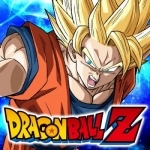
DRAGON BALL Z DOKKAN BATTLE
Games and Entertainment
App
A brand-new chapter in the Dragon Ball Z saga has arrived! Now you can experience all the nonstop...
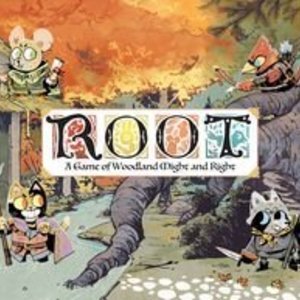
Root
Tabletop Game
Root is a game of adventure and war in which 2 to 4 (6 with the 'Riverfolk' expansion) players...
Boardgames 2018Games
Purple Phoenix Games (2266 KP) rated Dice Town in Tabletop Games
Aug 13, 2019 (Updated Jun 24, 2021)
Dice Town is a rootin’-tootin’ dice chuckin’ game relying heavily on poker and card majority. Each player is trying to gain the most money, gold nuggets, and property cards to beef up their VP totals once the game ends to become the baddest dude in the West.
To setup, place the town board in the middle of the table and populate its different areas with their components: the Gold Mine receives all the gold nuggets, the Bank receives $3 initially, the General Store receives all the cards of its deck with three property cards will be displayed next to Town Hall, and Doc Badluck will receive its deck with two cards displayed. Each player will receive a dice cup, five dice, and $8 to start. The youngest player received the Sheriff badge card and the game may begin!
Turns are taken simultaneously among all players. Players will roll their dice using the dice cup and choose one result to keep. They may keep more dice by paying $1 for each die kept, or they may pay $1 to keep zero dice and try again. Players are attempting to roll the best poker hand during these turns to set themselves up for the next phase of the game – actions.
Once all players are finished keeping dice and building poker hands, they move to the actions phase. Beginning with the Gold Mine and moving left to right, each area of town will be resolved based on the players’ results. The player with the most 9s rolled will take nuggets from the Gold Mine equal to the number of 9s rolled. The player with the most 10s will take the money at the bank. Most Jacks will draw General Store cards (that can mess with other players or help the holder) equal to the number of Jacks rolled and choose one card to keep. The most Queens will summon a lady at the Saloon to help steal any General Store or property card from another player. Most Kings will be the new Sheriff in town and will break all ties (and also can be bribed). Whomever was able to build the best poker hand will be able to claim the property card at the bottom of the display and one additional property for each Ace rolled. Finally, if a player was not able to win anything up to this point, they will be able to claim a card from Doc Badluck which can be very powerful.
Play continues in this fashion until either the supply of gold nuggets has run dry or all of the property cards have been doled out. Players will score VPs for nuggets, certain General Store cards, one VP per $2 cash, $5 from being Sheriff at the game end, and VP printed on property cards owned. Once the winner is determined, that player must now challenge the losing players to a duel at high noon. Or just gloat a lot.
Components. As you can see in the photos, the component quality is excellent, as with most Matagot titles. The dice cups are sturdy plastic, the embossed poker dice are awesome, the gold nuggets are great as well! I like the quirky cartoony art style. What I do not like about Dice Town components are the cards. They are super glossy, and that’s heck for taking photos and I just don’t enjoy the feel of them as much as the nice linen-finishes. It doesn’t break the game for me or make me enjoy playing it less, I just prefer other types of finishes on cards.
I really like Dice Town. I have always had a great time when playing, and I have even acquired it twice now. I sold my first edition copy via a BGG auction (I was addicted to auctions several years back) and missed it, so I was able to grab a second edition copy last year. I haven’t regretted reacquiring it and though I rated it a 4 I don’t see this ever leaving my collection again. I love the American West theme, and I love the way the dice cups feel and sound as players are slamming them on the table. But also I hate the way the dice cups sound as players are slamming them on the table when my children are trying to sleep or without some type of buffer material between the cups and a hard table top.
The second edition printing is definitely the way to go when deciding whether to purchase Dice Town. Everything is upgraded, and the rules have been tweaked a bit for the better. I don’t really know why I like American West in my board games so much because I can’t stand Western style movies or books, but I can’t get enough of them in my games. If you and I share preferences on games and themes and components, try to grab a copy of Dice Town. You will certain like it quite a bit. We do. Purple Phoenix Games give this one a 12 / 18. While that doesn’t seem like a great score, we would rather have access to it than not. And with so many games out there, earning a place on my shelf is a big deal for a game. So enjoy!
Purple Phoenix Games (2266 KP) rated Calico in Tabletop Games
Oct 3, 2019
Calico is a game of tile drafting, tile placement, pattern recognition, with a hint of point salad. Now, not everything you do will score you points, but there are many ways to score. This game plays equally well solo as it does with a group, but how does one play it?
DISCLAIMER: We were provided a prototype copy of this game for the purposes of this review. As this is a preview copy of the game, I do not know if the final rules or components will be similar or different to what we were provided. -T
To setup, each player chooses a quilt board that has a different colored stitching printed on it. This is the player’s color. Each player will receive their goal tiles of matching color and choose three of these to place on their boards in the starting positions (the rule book also details a recommended first game placement and tile choice). These tiles show the requirements to score them and how many points each scoring tile is worth. Three cat placards are chosen that will be visiting your quilt sections and who score differently from each other. Place the corresponding cat tokens nearby and randomly assign two black-and-white patter tokens to each cat under their placard. Place the cute rainbow tile and matching button tokens nearby. Shuffle the quilt patch tiles and place them in a pile or stack at the middle of the table. From this collection deal two per player, and draw and reveal three more face up to be the offer row. You are now ready to play.
On your turn you will place a tile from your hand, check for scoring, and then draw a new patch tile to your hand. You may place either of your tiles anywhere on your board in any orientation you like. Complete freedom! In order to score points, however, you will want to be strategic in where tiles are placed. You see, the scoring tiles you placed at setup will dictate how they score. Some tiles score when you have two sets of three similar tiles. Tiles are similar either by matching their patterns or their tile colors. Some tiles score when you have placed NO matches at all. Each of these tiles will score points based on whether you satisfied its requirements by color, by shape, or both. Example: a scoring tile says AAA-BBB. This means it wants two sets of three matching patch tiles surrounding it – and ONLY the tiles surrounding it. It also has printed scores of 8 and 13. This means that if you have two sets of tiles that match by color only (but not pattern) you will score 8 points. Should you match three tiles’ colors but also match three tiles’ patterns you will score 13 points.
It is important to note here that the six tiles surrounding the score tile do not have to match exactly. So you do not have to have three yellow tiles with ivy pattern. You need to have three yellow tiles (if you chose yellow for this example) and three tiles that have the ivy pattern. Your other set can be three blue tiles with three stripes patterns. As long as you have these sets from the six surrounding tiles you will score what is on that tile.
The cats come into play when you satisfy their scoring requirement printed on their placard. So Thimble, the actual Calico cat, will visit a portion of your quilt when you have placed three tiles adjacent to each other with their preferred pattern. In the example shown Thimble likes ferns and polka dots. So whenever you have three or more connecting tiles that share one of these patterns you will grab a Thimble token and place it on one of the tiles on your board. Each cat will have different scoring requirements and patterns of which to be aware.
Similarly, but with colors, are the rainbow scoring button tokens. Each patch tile contains a color and a pattern. Cats are attracted to patterns, whereas buttons are sewn onto similar colored tiles. Match up three tiles of the same color and you can sew a button onto your quilt. Buttons are worth 3 points and they just look great on your quilt.
Play continues in this fashion until all quilts are completed. Players then tally up their scores and determine the winner of Calico!
Components. Again, we were provided a prototype of this game, so I will not comment too much on the components as they will probably change from now until production. But, I am able to comment on the art and visual aspects. The art is by Beth Sobel. Do I need to say more at this point? Yes? Ok. So the illustrations of the cats are wonderful. The sleepy little space heaters are depicted so well and they really are cute (I mean, if you’re into cats). The patterns and colors on the quilt tiles and buttons are absolutely fantastic. Just seeing it on the table makes me excited to play it, and for a game about quilts and cats that is REALLY saying something. The art and visual appeal of this game is truly off the charts.
I am not colorblind, but I do appreciate when designers consider options for gamers who are. In Calico, though you are playing for and concentrating on patterns and colors, the tiles are also printed with icons that match the shapes of the buttons to be claimed. As you can see in our photos, yellow tiles have a crescent moon, which match the crescent moon button you claim. The purple tiles have a ghost? Onion? Jawless skull? Blueberry? Whatever it is, it also matched the token you claim for the rainbow bonus points. I like this. I like this a lot.
So do we like playing it? I have played several games of this solo as well as with a group, and it truly is fantastic. It’s one of those games that you can go nutty trying to figure out the optimal play, or you can just play it casually to come up with the prettiest end result. Granted, you probably will not win much, but golly look at your quilt! You can play Calico with ANY gamer type: beginner, casual, hard core, and industry personalities. And I believe that every one who plays this will have a great time and salivate for more plays (cats salivate, right? Or is that a dog-only thing?). I am very excited to see what Flatout Games has in store for this one on Kickstarter, and I would be happy to play with anyone who asks, or as part of anyone’s gaming event.
Purple Phoenix Games (2266 KP) rated Monkey Around in Tabletop Games
Jun 18, 2019 (Updated Dec 12, 2019)
Monkey Around is basically Kids’ Quelf. Never played Quelf? Meh, it’s okay if you are part of a silly group that will do anything asked of them. This game is similar in that you draw a circular card, and simply do what it asks you to do. As adults, some of the requests might be strange, but to a child, it’s all just silly fun. Many times you are asked to use the included stuffed banana in your tricks. Examples: lie on the floor with the banana on your belly button. Or: walk around the room while balancing the banana on your head. It’s silly.
I play this with my 3 year old boy and we have a great time with it. He is learning balance, improvisation, following instructions, motor skills, and interaction with others. It may make you feel silly but that’s what kids love, man. Just play this with your kids and have a really great time with zero pressure. Drop the banana? Oh well, try again with a different card. They will be cracking up and you will be strengthening that bond with your kids and fostering the love of board games early.
